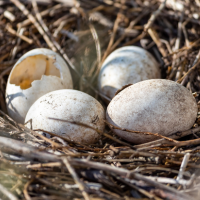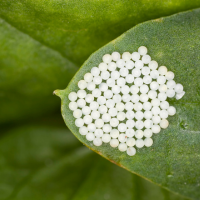1st June 2024
Germination and emergence
Welcome to the first day of International Nature Journaling Week 2024.
Today we are looking at beginnings - the moment of germination, birth, hatching or emergence into the world.
We will reflect on, and nature journal about, the start of new life cycles and the processes by which life begins.
To access a transcript of today’s video click here. You can then copy and paste this transcript into a translator if you would like to translate the text into another language.
Journal Together session
Session times are given in the presenter’s own timezone.
*You can use a timezone converter to check the event time in your area.
1st June, 6pm US Eastern time; 2nd June, 8 am Brisbane time.
Leandra Taylor will lead a Journal Together session on the theme of germination and emergence.
Nature journaling prompts and ideas
The easiest way to witness the process of germination is to grow sprouts in your home! You can find out how to do this by watching this short video by Gardening Australia. Nature journal their germination, the way they unfold from the seed, and how they change in the first few days.
When a flowering plant germinates, the first leaves to emerge are called cotyledons or seed leaves. In certain plants two cotyledons will emerge. These plants are called dicots. In other plants, such as grasses, one cotyledon will be present. These plants are classified as monocots. The seed leaves contain nutrients to nourish the growing embryonic plant. Very soon, the first true leaves grow and the cotyledons are no longer needed. Take a walk in nature, or in the garden, and see if you can notice the cotyledons of an emerging plant. Nature journal the seed leaves and the true leaves (if they are present). How are they different? What do you think is the function of these two types of leaf?
Some animals, including most mammals, give birth to live young, while others develop inside an egg before they emerge into the world. Sometimes, when we are out in nature, we can be lucky enough to find a nest with eggs or the evidence of an organism that has hatched, like the remains of an egg shell. Have you come across this before? Keep your eyes open for examples of eggs in nature, and journal about what you notice.
Did you know that Australia is home to a unique group of egg-laying mammals called monotremes? You can learn more about monotremes from this page from the Australian Museum.
Sometimes you can find examples of new shoots emerging from plants in your pantry. You might have potatoes that send out new shoots, ready for planting. Onions and garlic also do this. Observe the new shoots as they emerge and document this in your nature journal. What colour and shape are the shoots? You might like to put the plant in the ground afterwards so you can continue your observations as it starts its life cycle.
Have you ever been in nature and noticed a patch of tiny pearls on the underside of a leaf? These were most likely the eggs of an insect. In the insect world, the diversity egg types is astonishing. Some sparkle like jewels, some are round, others have texture, some are attached to leaves by a tiny thread. To learn more about the diversity of insect eggs, you can read this article by Atlas Obscura.
Pay close attention to your nearby nature and see if you can find examples of insect eggs to add to your nature journal. If you like, you can research to find which insect laid these eggs and more details about their lifecycle.
Do you know the story of your own birth into this world? Are there people in your life who could recount that story to you? If not, could you imagine this moment and what it might have been like? What do you feel when you reflect on the start of your own life? Write these reflections in your nature journal.
For many people, witnessing the birth of a child is the most profound experience in life. Have you been present as someone was being born? Write the story of that memory in your nature journal. What was that moment like? What did you feel?







